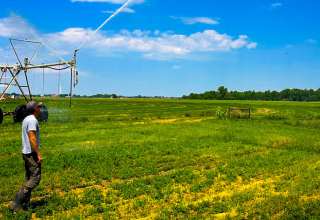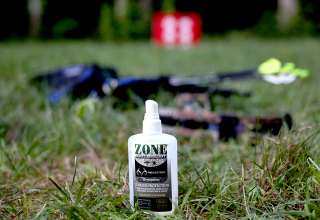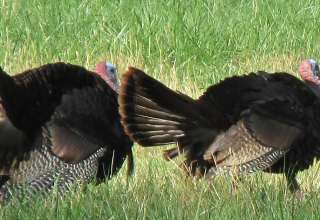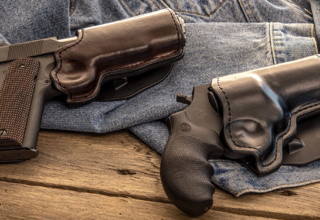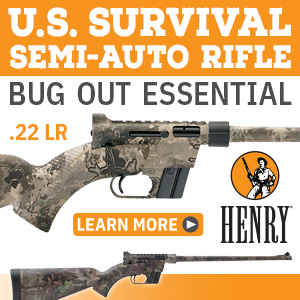Waterproof, comfortable for miles of trekking, and resistant to snake bites, the new ViperStop boots from Dryshod get our stamp of approval.
by Pete Rogers
The sky was beginning to shed light on the opening morning of turkey season. I had arrived early to beat the crowd to this public land hotspot…or so I thought. With the world on “shelter in place” orders due to the COVID-19 outbreak, the turkey hunters decided to shelter in my neck of the woods. The normally vacant public land felt more like Times Square than a serene hunting bastion.
As the morning progressed, the sounds of hunters imitating owls to elicit a response from a gobbler was overwhelming. At least a half-dozen hunters within three hundred yards of my location were hooting. I needed to move.
This brought some anxiety because I was wearing a new pair of boots from Dryshod. As a writer who has written extensively on hunting and hiking boots and the importance of breaking them in, I wasn’t keen on this development. I had planned to hunt here and go home; I hadn’t planned on having to walk a lot in unproven boots — something I have always warned against. I am a strong advocate of putting miles in boots before actually hunting in them.
But I was faced with quitting on the opening day at 6:00 am or giving the boots a trial-by-fire test. I opted to hunt and hoped for the best.
The Dryshod ViperStop boots have a 5mm Densoprene foam insulated bootie with an outside treatment of Hydrokote to shed water and prevent sogginess. This particular model has snake protection for good measure.
A waterproof knee boot is essential in the woods where I chase turkeys. Whether it is the morning dew from the pasture I am walking across or a creek I need to cross, water protection is as necessary to turkey hunting as is the cushion I sit on when waiting for the tom to appear.
Warming spring temperatures in the South not only invigorate the testosterone of male turkeys, it also brings out the snakes that have been resting in brumation during the cold months. Reptiles do not technically hibernate — rather, they slow their metabolism and remain awake during the cold months. Cold-blooded animals cannot regulate their body temperature and, therefore, are awake but lethargic during the winter. As the air temperatures begin to warm, they begin to move about to find the warm air and warm their blood.
This event happens to coincide with turkey season in my neck of the woods. I remember vividly my first encounter with a timber rattlesnake during a turkey hunt a few years ago. Like many people, I never wore snake boots because I had never seen a venomous snake during a turkey hunt. As I explained to someone after the incident, even if you have never heard a rattlesnake, you know instantly what it is. After my heart started again, I saw I was a mere four feet from a four-foot rattlesnake that had no intention of yielding ground. Fortunately, we both went our separate ways without incident.
Since that encounter, I have not hunted in spring woods without wearing snake boots. My first pair were lace-up boots that went to my knees. After ten minutes of lacing boots with nine feet of string, they were quickly relegated to the back of the closet.
The next pair contained a zipper in the back, knee length, and as stiff as armor from the Middle Ages. Those resulted in sore shins and blisters below my knee and someone getting a great deal at the annual yard sale for our church.
As I examined the Dryshod ViperStop boots, I pondered if the first test would hold up. Could I slide my foot in with little to no pulling, no contortions, or grunting? Mission accomplished. Next, were there hot spots on my heels or sides of my feet? Being flat-footed, finding boots that do not put blisters where my arch is supposed to be can be difficult. The Dryshod ViperStop passed this test as well, as it did with the heel issue that faces many knee-length rubber/neoprene boots. Anyone who has ever worn knee boots knows their propensity to eat socks. Fifteen minutes of walking results in 90% of the sock around your toes. Not so with the Dryshod ViperStop. My socks stayed put.
Last was comfort. The opening morning owl fest had me moving deeper into the wildlife management area. Even here in the mountains of South Carolina, most people hunt close to the road. Knowing this, I marched deeper and deeper into the game lands. Following, at first, an old logging road, then game trails, I meandered up the mountain and over the top, down another draw, up another mountain, and down again.
With no turkeys to pass my morning, I opted to spend the rest of the time scouting for places to hunt in the fall — up hills, down hills, through creeks and over blow-down trees. The Dryshod ViperStop conquered it all admirably.
By the end of the day, my iPhone app had logged 7.3 miles of walking in a pair of boots that were only a few days removed from the shipping package. No sore feet, no blisters, no complaints at all. In fact, I have been impressed with these so much, I now have designated the Dryshod ViperStop as my main trapping boots.
As a full-time trapper, I spend a lot of time in the woods, around beaver swamps, and on cattle farms chasing flat tails and predators. The knee boot is a mainstay but having the added protection against snake bites makes these the best boot for the job.
Honestly, I have not tried the snake proof protection yet. I have tried in vain to get my daughter’s boyfriend to slip them on and wade into a water moccasin-infested swamp for me to get some pictures, but he keeps declining. (I’m seriously starting to question his commitment to my daughter!)
The bottom line is that the Dryshod ViperStop is the most comfortable snake boot I have worn. The added benefit of total water protection is a bonus. Couple this with the ease of putting on and pulling off, and it’s guaranteed these boots will be worn almost every day for my work and recreation.
I am anxious to see how long they will last. A typical pair of knee boots in my occupation lasts about 6 to 7 months of daily wear. If first impressions are anything, I expect these to continue to beat expectations time and time again.







